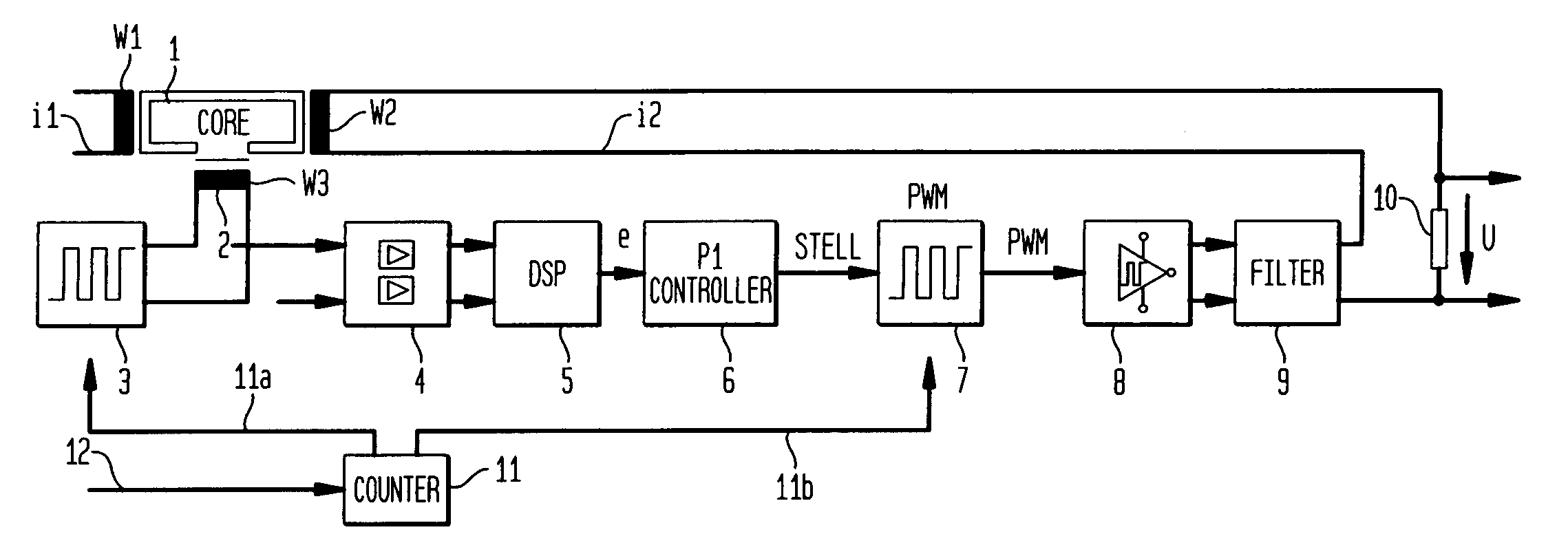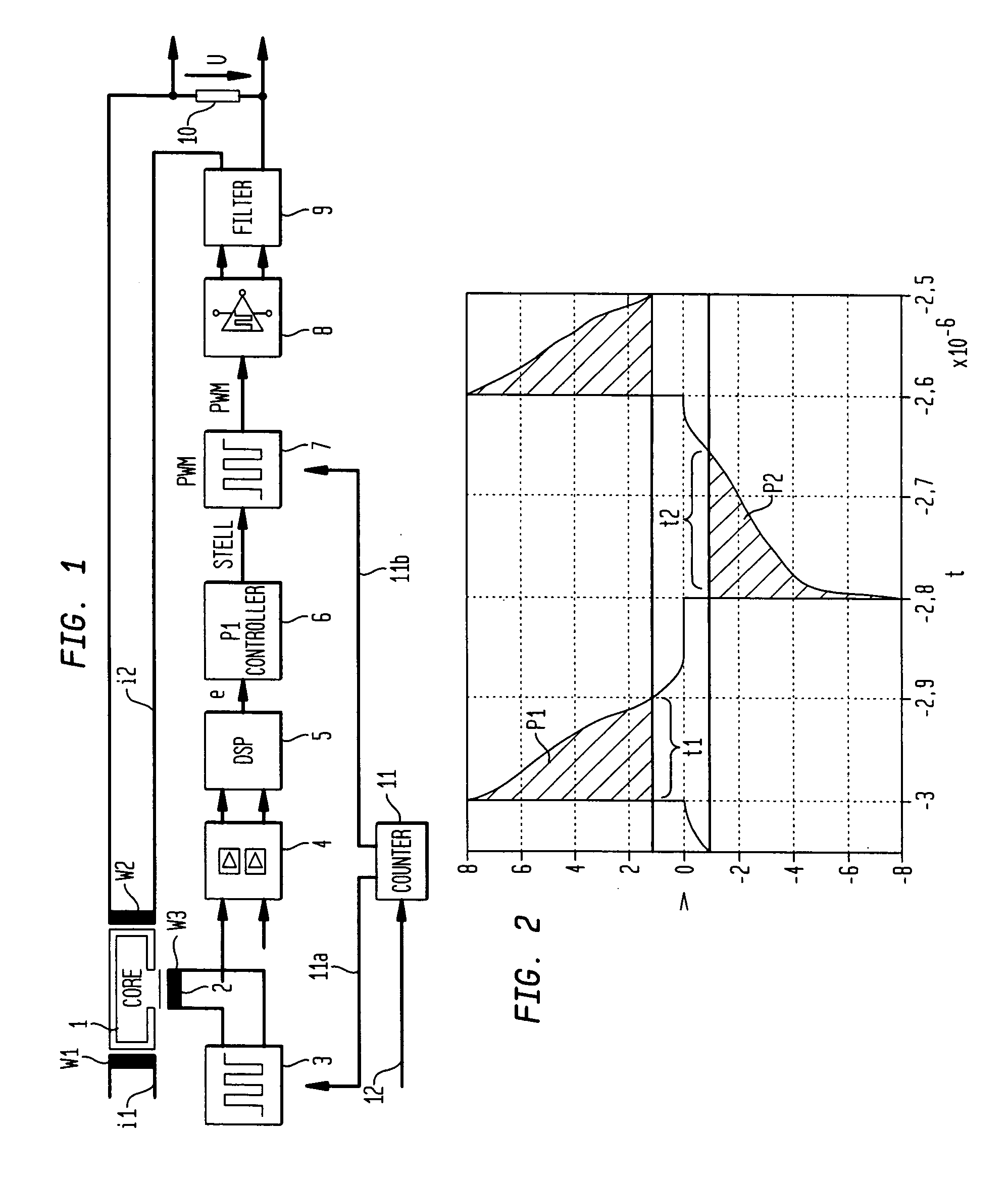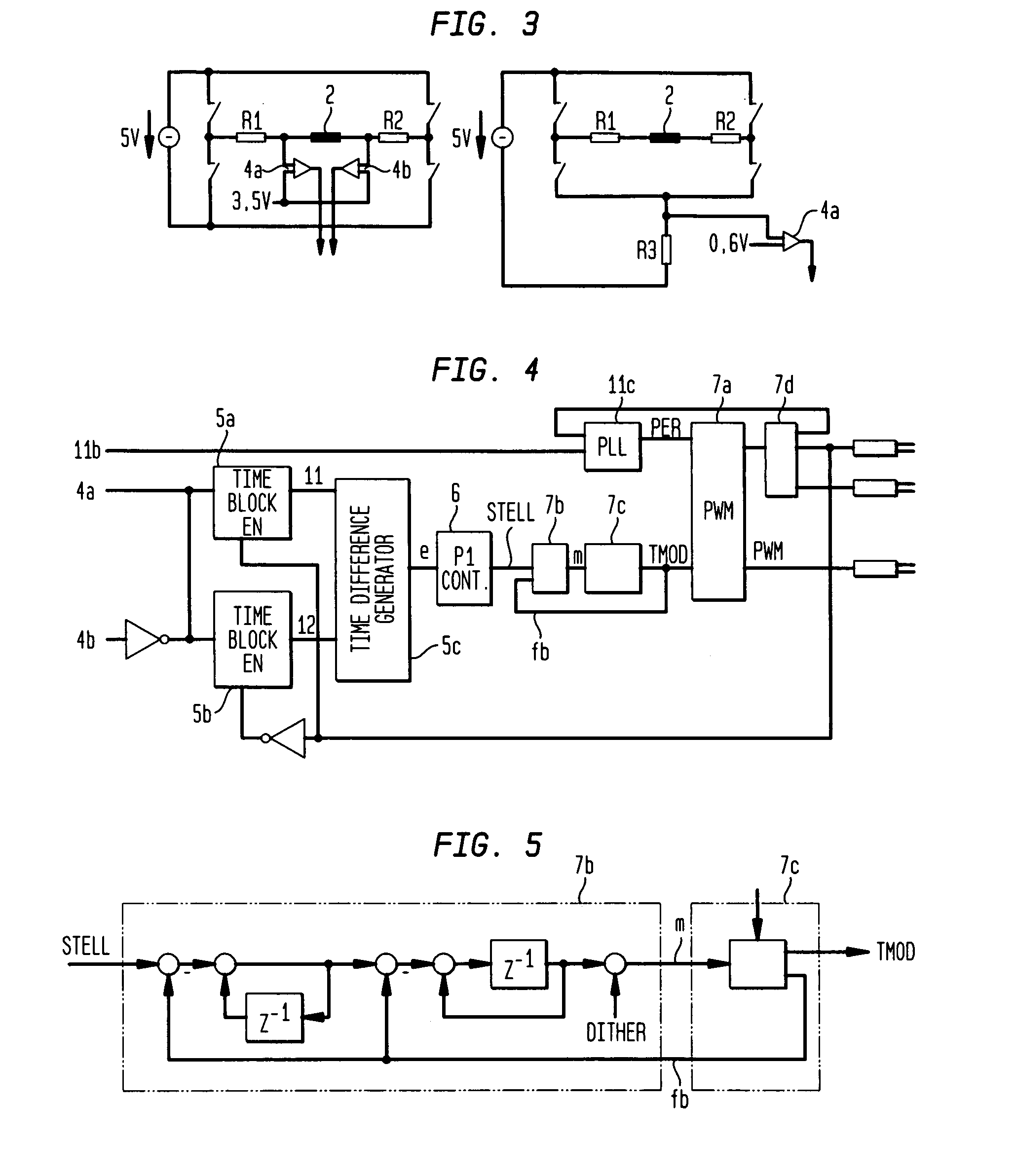Evaluation circuit for a current sensor using the compensation principle, in particular for measuring direct and alternating currents, and a method for operating such a current sensor
a current sensor and compensation principle technology, applied in the field of current sensors, can solve the problems of difficult direct implementation of peak-type rectification of probe signals in integrated circuits, and achieve the effect of improving resolution and smoothing compensation currents
- Summary
- Abstract
- Description
- Claims
- Application Information
AI Technical Summary
Benefits of technology
Problems solved by technology
Method used
Image
Examples
Embodiment Construction
[0032]Throughout all the Figures, same or corresponding elements are generally indicated by same reference numerals. These depicted embodiments are to be understood as illustrative of the invention and not as limiting in any way.
[0033]Turning now to the drawing, and in particular to FIG. 1, there is shown a schematic diagram of a compensation current transformer, operating according to the evaluation method and having an evaluation circuit according to the invention. Shown on the left of FIG. 1 is the magnetic part, which includes a main core 1 with primary winding w1 and compensation winding w2, as well as a magnetic flux or magnetic field probe 2. The primary winding w1 conducts the measuring current i1 and has a substantially lower number of turns per unit length (possibly only one turn) than the compensation winding w2. The flux probe 2 consists, for example, of a Vitrovac® strip and a sensor coil w3.
[0034]The drive 3, an oscillator, excites the magnetic field probe 2. This is f...
PUM
 Login to View More
Login to View More Abstract
Description
Claims
Application Information
 Login to View More
Login to View More - R&D
- Intellectual Property
- Life Sciences
- Materials
- Tech Scout
- Unparalleled Data Quality
- Higher Quality Content
- 60% Fewer Hallucinations
Browse by: Latest US Patents, China's latest patents, Technical Efficacy Thesaurus, Application Domain, Technology Topic, Popular Technical Reports.
© 2025 PatSnap. All rights reserved.Legal|Privacy policy|Modern Slavery Act Transparency Statement|Sitemap|About US| Contact US: help@patsnap.com



